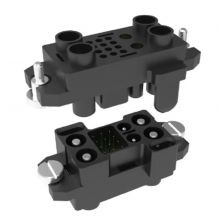80/125/200/250A CCS1 SAE DC EV Charging
Negotiable /Pair
Min.Order:10 Pairs
Quick Details View All >
Shenzhen HuaCanXian Electronic Co., Ltd
Product Details
l CCS1 is a type of Combined Charging System (CCS) standard, which is one of the charging standards for new energy vehicles, especially widely used in Europe and America. The CCS standard integrates DC fast charging and AC slow charging interfaces, simplifying the complexity of charging equipment and enabling the same charging station to support two different charging methods. The main difference between CCS1 and CCS2 lies in the design of the charging plug, with the United States adopting the CCS1 standard and Europe adopting the CCS2 standard.
In the United States, the CCS1 standard supports single-phase AC charging, and its charging plug design is suitable for the power system and vehicle needs in the United States. This design enables electric vehicles sold in the United States to be charged using CCS1 compliant household and public charging stations. In addition, Tesla's recently launched home charging stations also support NACS and CCS1 standards, indicating that Tesla is striving to adapt to different charging standards to meet a wider market demand.
l 1-Phase vs 3-Phase Charging Process
l What's happening during charging? Electricity flows from the power grid through the EV charger and into your electric car. And here, we come to the main distinction between the phases.
l 3-phase charging: Power flows through a single conductor (wire). Max charging power - 7.4 kW (In some countries, single-phase charging is only permitted or possible at lower charging power.
l phase charging: Power flows through three conductors (wires). Max charging power - 11 or 22 kW.
l So basically, the number of phases your car has only plays a role during AC charging. When using a DC charging station, only the max DC charging power of your electric vehicle and the charging station matters.
Contact Supplier

You May Like

New Products
Popular Searches
Recommended Products
Find Similar Products By Category